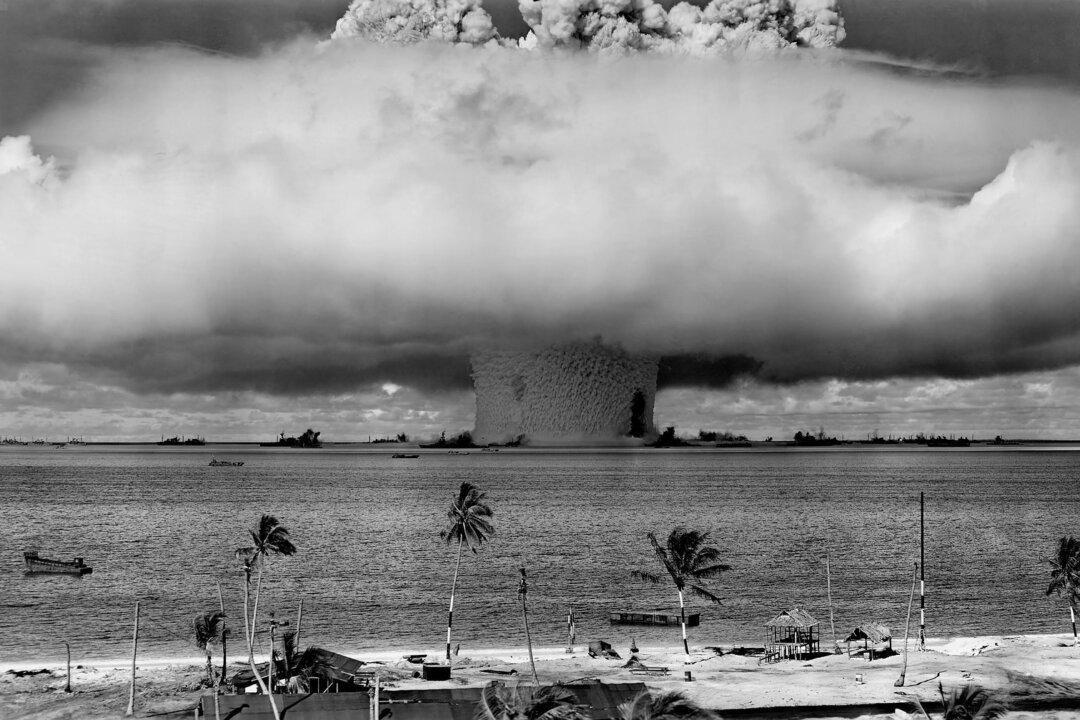So the periodic table has expanded again with the addition late last year of four new super-heavy elements, bringing the known total up to 118.
But the hunt for new elements started with efforts to develop nuclear power and the atomic bomb during World War II. At the time, uranium was the heaviest known element, sitting at number 92 in the periodic table.
Researchers quickly discovered that when uranium is placed in a nuclear reactor, a complex sequence of interactions leads to the production of several so-called transuranic elements (elements beyond uranium).
Probing around in the debris of the first hydrogen bomb test revealed two further transuranic elements, einsteinium and fermium, bringing the total to an even 100.
Some of these elements are more commonly encountered than you might think. Most families would own some americium (element number 95) in the form of an every-day smoke detector, and californium (number 98) is widely used in industrial analyzers. At a cool U.S.$60 million dollars per gram, however, californium is about a million times more expensive than gold.
Beyond the Century Element
Beyond element 100, not even a hydrogen bomb is powerful enough to make progress, and scientists had to change tack in their quest for ever heavier elements. They substituted finesse for brute force, using particle accelerators to fire atoms onto carefully chosen targets.
Under the right conditions, the nuclei of atoms in the beam and target can fuse together and produce new elements. Fittingly, the first element made in this way, mendelevium, was named after Dmitri Mendeleev, the creator of the periodic table.
Russian and American scientists continued to push forward through the 1950s, ‘60s, and ’70s, eventually reaching element 106. Reflecting the tensions of the Cold War years, priority for discovering these elements was strongly contested, with claims and counterclaims over ambiguous experimental results.
Not until 1997 did the International Union of Pure and Applied Chemistry (IUPAC) credit the discoverers of these elements and announce official names, mostly based on U.S. and Soviet scientists and cities.
The Germans picked up the baton in the 1980s and ‘90s, discovering elements 107 through to 112.
German researchers added a strongly European flavor to the naming scheme, honoring the physicists Niels Bohr (bohrium), Lise Meitner (meitnerium), and Wilhelm Röntgen (roentgenium), the astronomer Nicolaus Copernicus (copernicium) and their home city and state—darmstadtium and Hassium are named after the town of Darmstadt and the German state of Hesse (passing through Latin along the way, which changes the ‘e’ to an ‘a.’ Nothing’s ever simple!).
Only a handful of atoms of these elements have ever been produced.
Let’s Get Super-Heavy
Moving on to still heavier elements, the hunt becomes increasingly difficult for three reasons.
First, the probability of two nuclei successfully fusing to form a new element rapidly decreases. Second, these super-heavy elements are extremely unstable, so any atoms produced have a fleeting existence. And third, it becomes increasingly difficult to untangle the complex signatures that reveal their momentary creation and decay.
Reflecting improved international relations in the post-Glasnost era, most of the recent discoveries have been credited to collaborations between U.S. and Russian researchers. Elements 114 (flerovium) and 116 (livermorium) were announced by the IUPAC (International Union of Pure and Applied Chemistry) in 2012.
The most recent announcement awards discovery of elements 115, 117, and 118 to the same groups. A Japanese team, working independently, has been recognized for element 113.
Producing even a sniff of these super-heavy elements is a heroic endeavor. To discover element 118, for example, experimenters fired a beam of calcium atoms for months at a time onto a target loaded with the element californium.
The odds of any one calcium atom fusing is tiny, roughly the same as winning the Oz Lotto jackpot, but then being killed by a lightning strike 15 minutes later.
